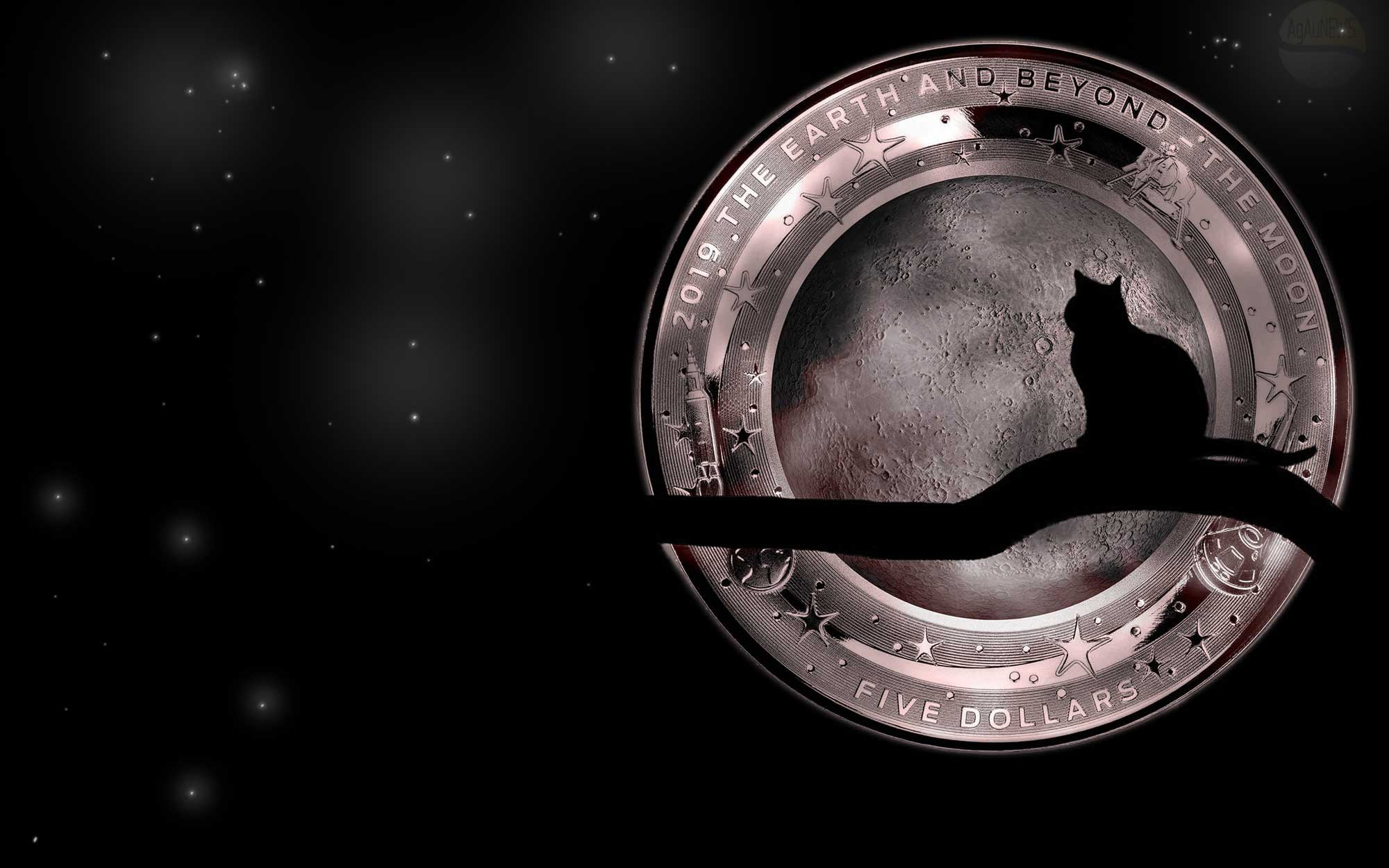Australia stays in the night sky with the second in the Earth and Beyond domed coin series
Australia has issued the second in its latest domed astronomy coin series called The Earth & Beyond and after our home planet, it’s moved to our very own satellite – the Moon. The latest incarnation of a format that proved hugely popular when it debuted with Southern Sky several years ago, they’ve kept in going in numerous forms ever since.
One-ounce in weight, the coin isn’t just shaped on one side like the New Zealand Mint’s new Death Star coin, it’s a true domed coin that is concave on the obverse face and convex on the reverse. The reverse has a fine coloured image of the moon in its centre, although not as big as we’d like. It’s surrounded by a border design that is similar to the first Earth coin, but has numerous touches that make it unique to this coin. The border also hold the title and denomination.
The obverse is a common one to this series and carries the effigy of Queen Elizabeth II, but instead of occupying the whole face as is normal with Australian issues, the mint has incorporated it into a design of interlocking orbital pathways, each with one of the eight planets upon it – poor old Pluto having been demoted.
Packaging is neat enough, although the box is common to all but the most expensive and/or esoteric of the RAM’sreleases. The shipper is colourful enough and gives a good first impression. A certificate of authenticity is enclosed and it will be serialised to let you know which of the 5,000 minted you have. Available to order now,it retails for $125.00 AUD and is available directly from the mint or from some of our sponsors.
THE EARTHS SOLITARY SATELLITE
The Earth’s only natural satellite, the moon is the largest in the solar system relative to the planet it orbits. The second densest after Jupiter’s Io, it’s thought to have formed just after the Earth around 4.5 billion years ago from an impact between a Mars-sized body and the Earth itself.
Set in synchronous rotation with the Earth, always showing its same face, the moon’s gravitational influence produces the ocean tides and is arguably a huge factor in the appearance of life on our planet. The Moon’s current orbital distance is about thirty times the diameter of Earth, causing it to have an apparent size in the sky almost the same as that of the Sun. This allows the Moon to cover the Sun nearly precisely in total solar eclipse. This matching of apparent visual size is a coincidence.
One of the major geologic processes that has affected the Moon’s surface is impact cratering, with craters formed when asteroids and comets collide with the lunar surface. There are estimated to be roughly 300,000 craters wider than 1 km on the Moon’s near side alone. Obviously, this leaves plenty of debris and when a new object impacts the lunar surface, some of that debris is ejected back into space. Occasionaly, it lands on Earth.
| SPECIFICATION | |
| DENOMINATION | $5 Australia |
| COMPOSITION | 0.999 silver |
| WEIGHT | 31.1 grams |
| DIMENSIONS | 39.62 mm |
| FINISH | Proof |
| MODIFICATIONS | Domed, coloured |
| MINTAGE | 5,000 |
| BOX / COA | Yes / Yes |







I love the series that the Australian Mint creates in the shape of a dome, I have all the silver coins since the Southern Sky Crux 🙂